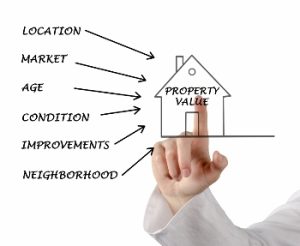Ultimate Guide About Cap Rate Calculator 2023
Go Back To Previous PageJust over 44 million American households are renters. That means there are always millions of people looking for new rental properties and millions of opportunities for new property investors. If you’re considering investing in property, now’s a good time. One important thing to know when you’re looking at investing in property is the property’s cap rate. Luckily, you can use a cap rate calculator. How to calculate the cap rate?
investors. If you’re considering investing in property, now’s a good time. One important thing to know when you’re looking at investing in property is the property’s cap rate. Luckily, you can use a cap rate calculator. How to calculate the cap rate?
Essentially, the cap rate can be calculated by dividing the net operating income of a property by the investor’s cost basis in the property.
- The net operating income is gross rent less expenses. For example, if a property generates $100,000 cash flows in gross income and has $30,000 operating expenses, the NOI would be $70,000.
- The property’s cost basis is the purchase price, closing costs, and renovation costs.
But what is the cap rate, and why does it matter? Read on to learn the answers to your questions.
What Is a Cap Rate?
A cap rate is a shorthand for “capitalization rate.” It’s the basic rate of return that a landlord or property owner could expect to get on their real estate property. In other words, it helps investors estimate the potential return on investment (ROI) before purchasing.
The cap rate is a measure used in real estate to evaluate the potential return on an investment property. However, this is the percentage of the property’s value generated in income in a given year. This is an annual ROI.
It also helps investors determine risk. A high capitalization rate could indicate a risky property (though this isn’t always a bad thing).
The formula is Cap Rate = Net Operating Income / Cost Basis.
Net Operating Income (NOI) is calculated by subtracting all operating expenses from the gross income generated by the property. Operating expenses include property taxes, insurance, and other revenue streams.
To calculate a cap rate, you need to divide the NOI (net operating income) by the property’s market value at the calculation time. Net operating income is the income that the investor would have left over after removing any operational expenses, like insurance, taxes, repairs, and management fees if they use a property manager.
For example, let’s say you are considering purchasing a rental property for $500,000 that generates an NOI of $50,000 per year. The cap rate for this property is 10% ($50,000 / $500,000). This means the property is expected to generate a 10% return on your investment each year.
Cap rates aren’t static. They change as the property value changes and the cost of operating rental property changes. Therefore, while the value may increase, the repair and management cost will likely increase. Investors need to use current information to find accurate cap rates.
Why Do Cap Rates Matter?
Cap rates are helpful for would-be investors who are comparing different properties, especially if those properties are in other neighborhoods or cities. A higher cap rate indicates a higher potential return, while a lower one suggests a lower return. However, it’s important to remember that the cap rate is just one factor when evaluating an investment property. Therefore consider other factors such as location, market trends, and potential for appreciation.
You can look at average cap rates in various areas to decide where to invest before narrowing down your options and choosing your ideal property.
Cap rates also make it easier to compare different types of investment properties. On paper, deciding if an apartment building or a single-family rental would be a better investment remains difficult. The apartment would make more monthly money, so that it may seem the obvious choice. However, when you look at the cap rate, you may see that the expenses and initial value aren’t worth it.
This calculation is imperfect and may need adjustments for other considerations. However, it lets investors quickly compare properties and make informed investment decisions. Ultimately, using a Cap Rate Calculator helps make the difference between turning a great return on your investment or coming up short.How Can a Cap Rate Calculator Help You?
It’s not difficult to calculate the cap rate. Once you know how to calculate this number, you may think that it would be pointless to use a calculator. However, if you’re a serious investor looking at multiple properties, a cap rate real estate calculator can help.
The calculator does the work for you, and quickly. You don’t have to analyze spreadsheets. Your calculations become more accurate because you eliminate the risk of human error. When you want to find the perfect investment property amongst several cable options, the cap rate calculator will help you make the intelligent choice.
What is a good cap rate in 2023?
It’s hard to definitively answer this question since the real estate market changes yearly and heavily depends on local factors. What some consider a reasonable rate today can differ three years from now. So you’ll need to research and carefully analyze the specific market you’re considering investing in.
When evaluating a potential investment’s performance, we can say that it’s important to monitor factors such as supply and demand, property values, market trends, interest rates, and rental costs. When considering a reasonable rate for 2023, consider all of these elements and industry benchmarks set by professionals in the sector.
What does a 7.5% cap rate mean?
A 7.5% cap rate is used to evaluate real estate investments and determine the return they will generate on their current value. It is calculated by dividing a given property’s net operating income (NOI) by its current market value and multiplying by 100.
What this means for potential investors is that if net profits remain constant and market value does not depreciate, you can expect an average annual return of 7.5%.
Consider factors that could cause fluctuations in your returns, such as changes in market conditions or taxes. So you can make intelligent decisions when investing in commercial real estate property.
Start Investing in Property With a Cap Rate Calculator
If you’re not already using a cap rate calculator for your property investment needs, what’s holding you back? A cap rate calculator will make finding the best investment property a breeze without the need to do any math by hand.
Are you getting ready to buy real estate? View our listings on NestApple to find the perfect property today.


